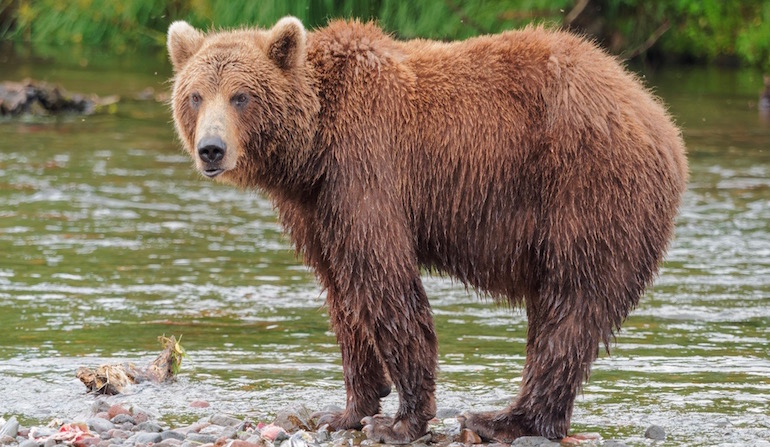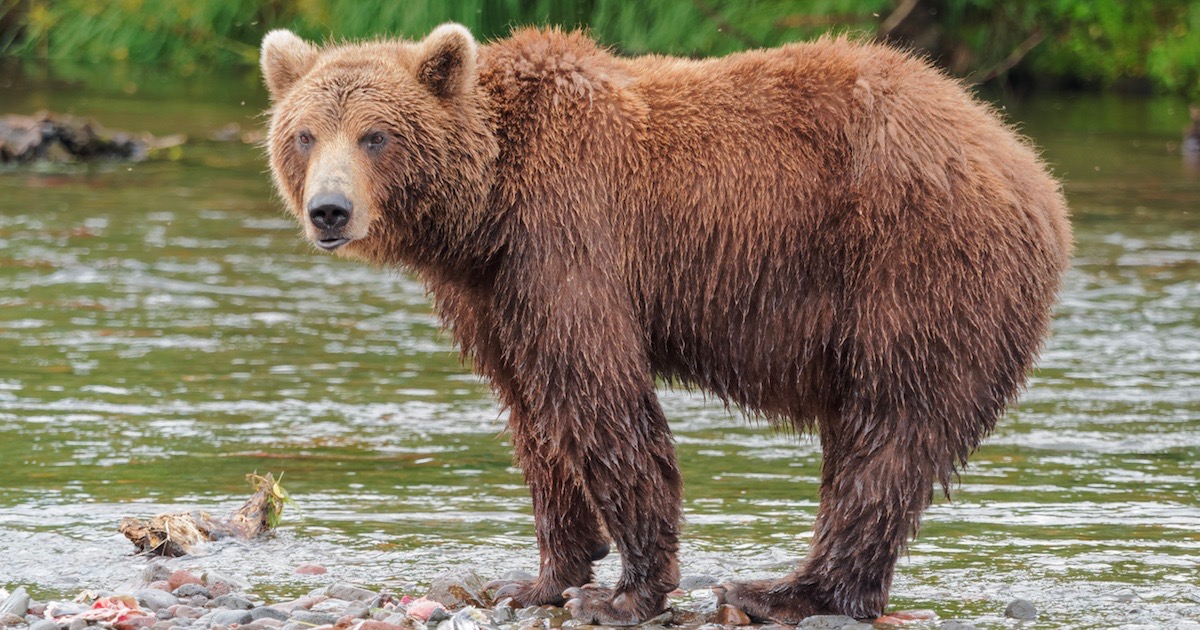 Evolution
Evolution
 Intelligent Design
Intelligent Design
Two Genetic Blows Against Darwinian Speciation


Classical neo-Darwinism relies on genetic mutations (random mistakes) acted on by natural selection (an aimless effect dependent on what survives). From these two sources of unguided happenstance, all the adapted perfections in life are supposed to have emerged. But what if life is, instead, determined by active information content? An entirely different picture of “evolutionary” change becomes possible: one that involves information sharing. Two recent genomic studies provide additional validation for the new picture.
Insects: Rampant Horizontal Gene Transfer
Horizontal transfer (HT) of genetic information has been well known in microbes for some years now, but recently has been coming more visible in higher organisms. Transposable elements (TE) are, as the name implies, transposable or relocatable within a genome. But could they also play a role in genetic diversity between organisms? Apparently so. A new paper in PNAS announces “Massive horizontal transfer of transposable elements in insects.”
Eukaryotes normally receive their genetic material from their parents but may occasionally, like prokaryotes do, acquire DNA from unrelated organisms through horizontal transfer (HT). In animals and plants, HT mostly concerns transposable elements (TEs), probably because these pieces of DNA can move within genomes. Assessing the impact of HTs on eukaryote evolution and the factors shaping the dynamics of these HTs requires large-scale systematic studies. We have analyzed the genomes from 195 insect species and found that no fewer than 2,248 events of HT of TEs occurred during the last 10 My, particularly between insects that were closely related and geographically close. These results suggest that HT of TEs plays a major role in insect genome evolution.
This is very different from vertical inheritance. How could it happen? It’s like being told you could inadvertently get a piece of DNA from a chimpanzee at the zoo and pass it on to your kids. Impossible. That would scramble every animal’s identity, wouldn’t it? It might explain other people’s kids, but not yours!
The prevalence of HT in higher animals is only now coming to light through systematic studies. These authors examined genomes of “195 insect genomes, representing 123 genera and 13 of the 28 insect orders” to find the 2,248 events they report in the paper. Imagine what this must mean for evolutionary theories of common descent:
We show that DNA transposons transfer horizontally more often than retrotransposons, and unveil phylogenetic relatedness and geographical proximity as major factors facilitating HTT (horizontal transfer of transposons) in insects. Even though our study is restricted to a small fraction of insect biodiversity and to a recent evolutionary timeframe, the TEs we found to be horizontally transferred generated up to 24% (2.08% on average) of all nucleotides of insect genomes. Together, our results establish HTT as a major force shaping insect genome evolution.
The authors recognize that transposons can jump species barriers much easier than genes can. Even so, it’s astonishing to think that this much genetic information could pass readily between species, most likely via bacteria vectors.
In animals and plants, very few cases of such horizontal gene transfers (HGTs) have been reported so far. In fact, most of the genetic material that is horizontally transferred in animals and plants consists of transposable elements (TEs) which are pieces of DNA able to move from a chromosomal locus to another. The greater ability of TEs to move between organisms certainly relates to their intrinsic ability to transpose within genomes, which genes cannot do. HT of TEs (HTT) may allow these elements to enter naive genomes, which they invade by making copies of themselves, and then escape before they become fully silenced by anti-TE defenses.
Some interpretation is required in this kind of analysis. How does one tell HT from vertical inheritance in a stretch of DNA? The authors recognize the challenge, but give four reasons why their numbers are probably low estimates. They conclude, “HTT is not only widespread in insects, but the true number of HTT events is likely to be several orders of magnitude larger than the number we report.” And this is just for recently-diverged insects. Imagine how much transfer goes on worldwide over longer times! At the end of the article, they suggest that more of this is happening than we think, not only in insects, but in other higher eukaryotes:
Extrapolating our estimates over the ∼480 My of insect evolution and the whole insect biodiversity points toward millions of HTT events generating substantial fractions of insect genomes. These inferences, combined with the pronounced impact TEs have on genome structure and dynamics, establish HTT as a major factor driving insect molecular evolution. Our results call for further assessments of the influence of HTT on other taxonomic groups and of the ecological factors and relationships affecting HTT dynamics.
Bears that Care and Share
There’s another means of information sharing: hybridization. Last November we talked about how rampant hybridization is challenging evolutionary theory, weaving Darwin’s tree into a web. Another example just came to light. News from the Senckenberg Research Institute reports widespread gene flow across bears worldwide, leading to the speculation that all bears are interfertile and possibly members of a single species.
Senckenberg scientists have sequenced the entire genomes of four bear species, making it now possible to analyze the evolutionary history of all bears at the genome level. It shows that gene flow, or gene exchange, between species by extensive hybridization, is possible between most bear species – not only polar and brown bear. The DNA samples of different bear species came from different European zoos, underlining their importance not only for conservation, but also for research. The study published today in “Nature Scientific Reports” also questions the existing species concept in general, because other genome studies too have, frequently found gene flow among species.
How could this happen? Hybrids were supposed to be infertile, like the iconic mule. Many hybrids, though, can still bear young, passing on their shared information over generations. The scientists believe that the brown bear may be a “vector species” connecting all species of bears, whether in Asia, Alaska, America, or Europe — by acquiring genes from one region and passing them along between regions as they travel and breed.
As they indicate, this calls into question the very meaning of a species. Dr. Axel Janke wonders, “We have to ask ourselves: Does the species concept still hold true, given there is evidence of gene flow not only in bears, but also in other animals?” This comes close to home with increasing evidence that modern humans have Neanderthal genes. How, then, can we label them with another species label, Homo neanderthalensis? That’s very arbitrary.
Non-Darwinian Implications
In the light of these findings, it seems presumptuous of Darwin to write about “The Origin of Species” when we can’t even say what a species is. But neither would it be correct to think that all plants and animals have fluid boundaries, able to morph endlessly like shape-shifters into anything else. Clearly, you look different from a mushroom. How, then, are we to interpret the living world?
Try information. Notice that both these examples of information sharing are non-Darwinian. They don’t involve accidental mutations and blind natural selection. They are both methods whereby an organism’s genetic information can be given and received. We might consider the way people share good books with one another. That information might cause “change through time” in the way people behave based on what they come to know, but it would not be a blind, unguided process.
In the same way, a designer would give designed organisms the means to adjust to changing environments by the acquisition of pre-existing information, so that they remain what they are but don’t readily go extinct when entering a new habitat or climate regime. Programming for that kind of robustness would make a lot of sense.
Photo: Brown bear, by Robert F. Tobler (Own work) [CC BY-SA 4.0], via Wikimedia Commons.
